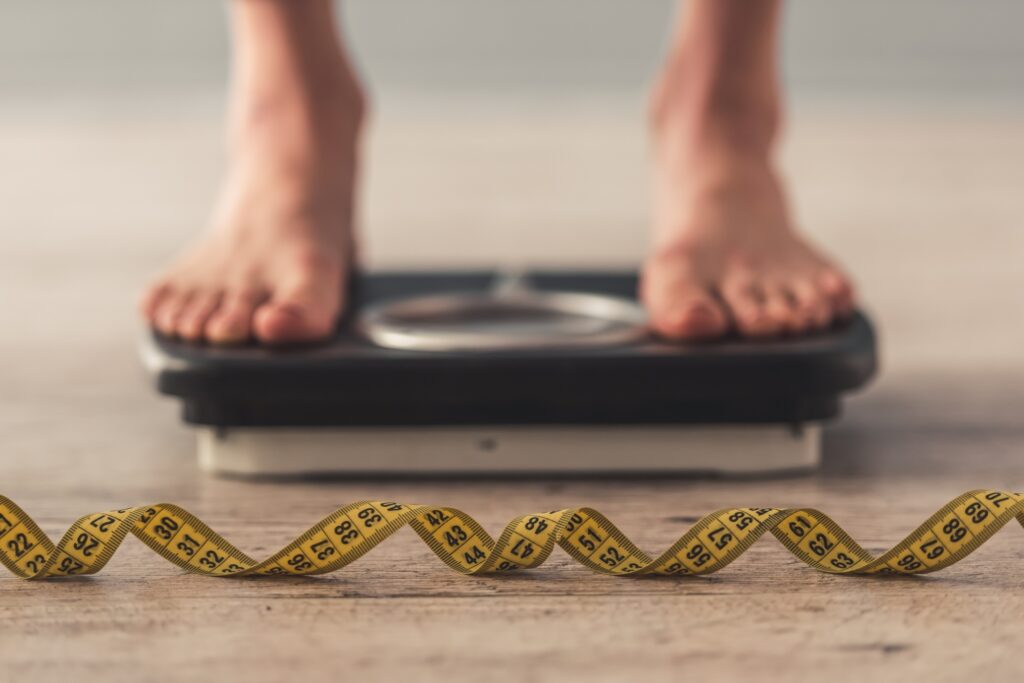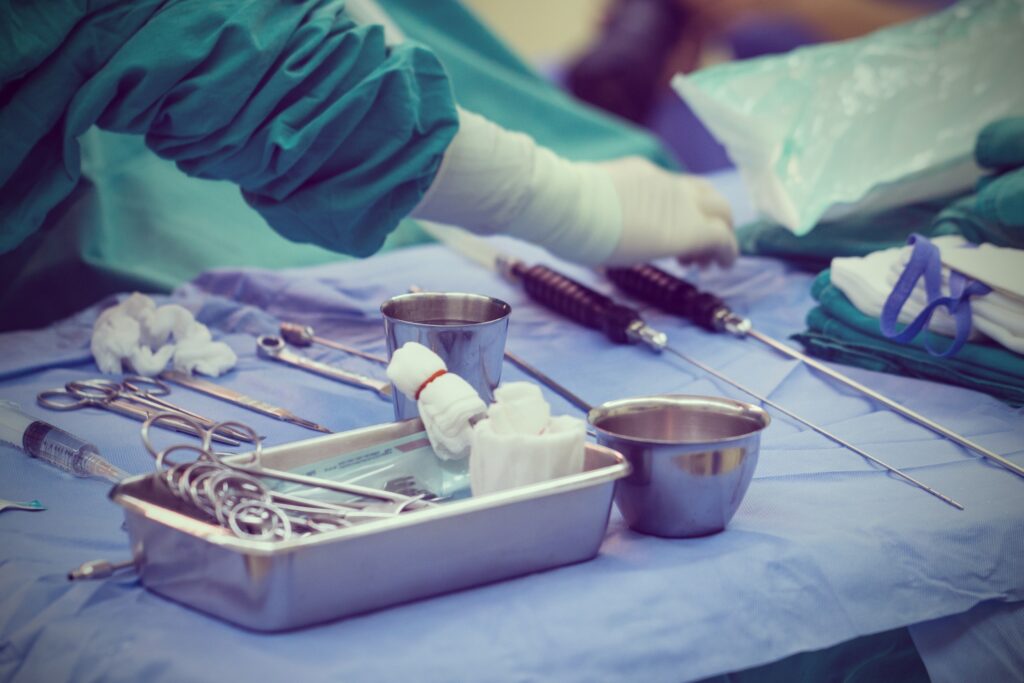
For many struggling to reduce their obesity, a popular and effective weight loss procedure is gastric sleeve surgery, which can significantly reduce one’s weight and keep it off over time. In addition, the resulting weight loss may lead to benefits such as the reduction or elimination of chronic obesity-related diseases.
If you have been struggling with obesity or are already scheduled for a gastric sleeve surgery, this guide will help you know what to expect before, during and after surgery. Preparing for this life-changing procedure will go a long way toward ensuring you have a successful experience mentally and physically.
What’s the history of gastric sleeve surgery?
Gastric sleeve surgery is one of the newest types of weight-loss surgery, and it has become one of the most popular options. In fact, more than half of all bariatric (obesity) surgeries currently performed are gastric sleeve operations.
This type of surgery was originally the first step in a two-step weight loss surgery. In the second step, known as a duodenal switch operation, the intestines were re-routed and the gallbladder was removed.
However, doctors discovered that many patients lost enough weight in the first part of the operation—the gastric sleeve portion—so they began to perform it as a standalone operation.
This type of surgery has become popular for its relative simplicity, its effectiveness and the fact that it doesn’t require any foreign objects (like a balloon or band) to be left in your body.
You might also be interested in: Gastric Sleeve 10 Years Later: A Comprehensive Look at Long-Term Outcomes
How does it work?
Your surgeon will make small incisions in your abdomen and use laparoscopic instruments to remove about 75 percent to 80 percent of your stomach. The remaining part of your stomach is connected using surgical staples, forming a banana-shaped “sleeve.”
This sleeve is much smaller than your original stomach, so you’ll feel full much more quickly. As a result, you’ll lose weight and be able to keep it off in the long term.
In addition, the part of your stomach that’s removed secretes a hormone (ghrelin) that stimulates your appetite, so you won’t feel hungry as often once this is removed.
After your surgery, you may be able to lose up to 75 percent of your excess weight. A good bit of this weight will come off in the first few months after surgery, and you’ll probably continue to lose weight until at least the end of the first year and possibly also through the second year.
For someone who’s struggled with obesity, this can have a profound impact on your self-confidence as well as your overall health. This type of weight loss has the potential to significantly lower your risk of developing chronic weight-related illnesses such as type 2 diabetes, high cholesterol, certain types of cancer and sleep apnea. If you already have these diseases, you may be able to reverse them in some cases or possibly lessen their severity.
Who qualifies for this procedure?
You may qualify for gastric sleeve surgery if you meet the following conditions:
- You have a body mass index (BMI) of at least 40: You can qualify by being more than 100 pounds overweight.
- Your BMI is at least 35 but under 40, and you have at least one obesity-related health problem: These include diseases such as type 2 diabetes and high blood pressure.
- You’ve tried other weight loss methods without long-term success: You should be unable to achieve a healthy weight loss over time with prior efforts to diet and exercise.
- You have realistic expectations: It’s important to understand exactly what the surgery can and can’t do for you.
- You’re committed to following post-surgical instructions: You’ll need to follow a diet, take vitamins and commit to other positive behaviors.
What are the benefits of this type of surgery?
Gastric sleeve surgery can provide many benefits, including the following:
- Prompts rapid, significant weight loss
- Reduces your appetite
- Enhances a feeling of fullness
- Achieves long-lasting results
- Largely avoids the “dumping syndrome” that may occur with gastric bypass surgery
- Can usually be performed laparoscopically, which requires smaller incisions that result in less bleeding and an easier recovery
- Is very effective in reducing the risk of or improving health conditions related to obesity, such as type 2 diabetes
- Requires a relatively short hospital stay of approximately two days
How do you prepare for surgery?
Preparing for surgery can make the process go more smoothly and increase your chances of losing a significant amount of weight—and keeping it off—after surgery.
The following steps will help set you up for the best chance of success:
- Schedule any necessary tests or physicals: Sometimes your surgeon or insurance company may want to get more information to ensure you’ll be a good candidate for gastric sleeve surgery.
- Understand your insurer’s requirements: Depending on your insurance company’s specific rules, you may have to provide documentation from your physician and obtain pre-authorization from your insurer before undergoing surgery.
- Prepare for help: Arrange for time off work (at least two weeks, depending on the type of work you perform), set up childcare and prepare a list of foods and vitamins you’ll need after surgery. As you’ll need someone to drive you home after surgery, you might want to ask this person if they can shop for you if necessary.
- Start to eat a healthier diet: Since you’ll be eating vastly smaller amounts after you’ve had surgery, it will be more important than ever to eat nutritious foods. You should change your eating habits several months prior to your surgery so the transition will be easier.
- Begin an exercise plan: Although exercise may be difficult when you’re carrying extra weight, it’s important to start moving before your surgery. Start slowly, and ideally work your way up to 20 to 30 minutes of exercise. This will lessen your chances of having complications after surgery. You’ll also be setting yourself up for successful weight loss that you can maintain in the long term.
- Eat plenty of protein: Protein may make you feel fuller for a longer period, and it can also preserve muscle after you’ve had surgery. Seafood, white-meat poultry, eggs and dairy foods such as cheese are all good sources of protein.
- Eat slowly and chew your food thoroughly: This is how you’ll need to eat post-surgery, so start making it a habit now.
- Practice eating your meals without a beverage: After surgery, you’ll need to wait at least an hour after you’ve finished eating before you have something to drink. Otherwise, food will pass through your new, smaller stomach too quickly.
- Stop smoking: If you smoke, you’ll need to quit at least six weeks before your surgery to reduce your risk of developing blood clots.
- Drink plenty of water: Water can help you feel full, stay well hydrated and reduce the chance of developing kidney stones after your procedure.
- Abstain from alcohol: You may get intoxicated much more easily post-surgery, and alcohol can also result in unhealthy blood sugar changes. If you drink, start abstaining before your surgery so it won’t be as difficult afterward.
- Attend support group meetings: Hearing real-life experiences from patients who have had gastric sleeve surgery can be invaluable in helping you prepare for surgery. You’ll be able to hear about successes and learn how to overcome post-surgery changes and challenges.

What happens during surgery?
Your gastric sleeve surgery will probably take about an hour. You’ll receive anesthesia before your surgery, and your surgeon will make a few small incisions in your stomach. A laparoscope, which has a tiny camera on it, will help your surgeon guide instruments through the small incisions.
During the procedure, your surgeon will remove a large part—about 75 percent—of your stomach. The remaining part will be reattached and used to form a banana-shaped “sleeve” that becomes your new, smaller stomach.
What is recovery and life post-surgery like?
After your surgery is complete, you’ll be placed in a recovery area where your vital signs will be monitored, and you’ll be closely observed for any signs of complication.
When you fully awaken, you’ll be moved to your hospital room, where you’ll receive pain medication to increase your comfort level. You’ll usually be encouraged to walk a few steps within the first few hours after surgery, since this will lessen your risk of developing blood clots and will help lessen shoulder pain that can be caused from carbon dioxide in your shoulder post-surgery.
Hospital stays after gastric sleeve surgery typically last one to three days. You’ll be given instructions on how to take care of yourself after you leave the hospital, and it may be helpful to ask the friend or family member who’s bringing you home to take notes and ask questions. In addition, your doctor and the hospital staff will make sure you understand that you can call with any questions or concerns.
Don’t overdo it as you recover! With this in mind, take about two weeks before you return to work. You may need more time off if you perform physically demanding work.
As you adjust to your life post-surgery, a support group can help you manage the physical and mental changes you’ll undergo. In some cases, patients may experience mood changes as they adjust to fewer calories, but this usually doesn’t last for too long. Others may experience depression after their surgery; your friends or family may not be as supportive of your weight loss efforts as you’d like, and although the surgery can have a profound effect on your life, it won’t solve every problem for you. A support group will assist you in navigating the changes you’re experiencing and provide valuable information about how to work through any issues.
What changes to your diet and exercise habits will you need to make?
When you get home, you’ll have an easier time adjusting to dietary and exercise changes if you’re prepared for them. You’ll need to do the following to give yourself the best chance for an easy recovery as well as successful weight loss that you keep off in the long term:
- Follow your eating plan: Your new, smaller stomach is gradually healing, so it’s important to following your doctor’s instructions about eating. The first day after surgery, you’ll probably be told to drink only clear liquids, and you may need to stick to a liquid-only diet for the first week. After this, you’ll transition to soft, pureed food for about two weeks. Introducing solid foods too soon could damage your stomach and cause nausea and other side effects.
- Chew your food thoroughly: You’ll also need to thoroughly chew your food so it can easily move into your new narrower, smaller stomach.
- Make wise food choices: Since your stomach can handle significantly less food now, you’ll eat a much lower amount than you did previously. You’ll need to choose nutritious foods to help your body get the nutrients it needs.
- Reduce your calories: For the first two weeks after your surgery, you’ll need to restrict your calories to about 400 a day. You’ll gradually allow more, but it’s important to stick to this very low number in the short term.
- Take vitamins and supplements: Since you’ll be taking in fewer calories and nutrients, you’ll need to take multi-vitamins as well as additional B vitamins to avoid any deficiencies.
- Get moving: Cardiovascular exercise such as walking is recommended, and you can gradually increase the amount of exercise you’re getting. You’ll need to wait at least four weeks after your surgery before you perform any strenuous exercises or work-related activity, or you could develop complications around your surgical wound.
Is there any risk of complications?
Gastric sleeve surgery has a low risk of complications, but any surgery carries risks. Only about 1 percent to 2 percent of patients experience any complications after their gastric sleeve procedures. Since several small cuts are made in the stomach, there’s a chance that fluids will leak afterward. Staple lines that are used to hold the “sleeve” together can also develop problems, including an infection or the formation of scar tissue. Bleeding and blood clots are other possible complications.
In a small number of patients, weight may begin to climb again post-surgery. This is thought to occur due to eating too many of the wrong types of foods, so the gastric sleeve stretches and starts to accommodate more food.
Although some complications are unavoidable, you can reduce your risk of these problems by following your post-operative care instructions. If you notice any complications, notify your doctor immediately.
What type of weight loss can you expect?
Overall, you can expect to lose about 75 percent of your excess weight, with the greatest percentage coming off in the first few months. If you follow your post-surgery plan, you should continue to lose weight during the next one to two years and be able to maintain this slow, steady weight loss.
Whether you have questions about procedure costs or your weight loss team, contact BMI of Texas today. If this procedure is appropriate for you, we’ll support you every step of the way, from preparation to long-term recovery.

